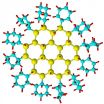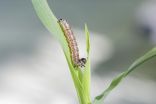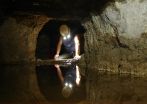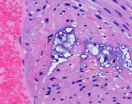(Press-News.org) CIFAR researchers have shown that information stored in quantum bits can be exponentially compressed without losing information. The achievement is an important proof of principle, and could be useful for efficient quantum communications and information storage.
Compression is vital for modern digital communication. It helps movies to stream quickly over the Internet, music to fit into digital players, and millions of telephone calls to bounce off of satellites and through fibre optic cables.
But it has not been clear if information stored in quantum bits, or qubits, could likewise be compressed. A new paper from Aephraim M. Steinberg (University of Toronto), a senior fellow in CIFAR's program in Quantum Information Science, shows that quantum information stored in a collection of identically prepared qubits can be perfectly compressed into exponentially fewer qubits.
Digital compression in the world of classical information theory is fairly straightforward. As a simple example, if you have a string of 1,000 zeros and ones and are only interested in how many zeros there are, you can simply count them and then write down the number.
In the quantum world it's more complicated. A qubit can be in a "superposition" between both zero and one until you measure it, at which point it collapses to either a zero or a one. Not only that, but you can extract different values depending on how you make the measurement. Measured one way, a qubit might reveal a value of either zero or one. Measured another way it might show a value of either plus or minus.
These qualities open up huge potential for subtle and powerful computing. But they also mean that you don't want to collapse the quantum state of the qubit until you're ready to. Once you've made a single measurement, any other information you might have wanted to extract from the qubit disappears.
You could just store the qubit until you know you're ready to measure its value. But you might be dealing with thousands or millions of qubits.
"Our proposal gives you a way to hold onto a smaller quantum memory but still have the possibility of extracting as much information at a later date as if you'd held onto them all in the first place," Steinberg says.
In the experiment, Lee Rozema, a researcher in Steinberg's lab and lead author on the paper, prepared qubits in the form of photons which carried information in the form of their spin and in their path. The experiment showed that the information contained in three qubits could be compressed into only two qubits. The researchers also showed that the compression would scale exponentially. So it would require only 10 qubits to store all of the information about 1,000 qubits, and only 20 qubits to store all of the information about a million.
One caveat is that the information has to be contained in qubits that have been prepared by an identical process. However, many experiments in quantum information make use of just such identically prepared qubits, making the technique potentially very useful.
"This work sheds light on some of the striking differences between information in the classical and quantum worlds. It also promises to provide an exponential reduction in the amount of quantum memory needed for certain tasks," Steinberg says.
"The idea grew out of a CIFAR meeting," he says. "There was a talk by Robin Blume-Kohout (Sandia National Laboratory) at the Innsbruck meeting that first started me thinking about data compression, and then discussions with him led into this project."
INFORMATION:
The paper will appear in an upcoming issue of Physical Review Letters. In addition to Rozema and Steinberg, authors include Dylan H. Mahler, CIFAR Global Scholar Alex Hayat and Peter S. Turner.
About CIFAR
CIFAR brings together extraordinary scholars and scientists from around the world to address questions of global importance. Based in Toronto, Canada, CIFAR is a global research organization comprising nearly 400 fellows, scholars and advisors from more than 100 institutions in 16 countries. The Institute helps to resolve the world's major challenges by contributing transformative knowledge, acting as a catalyst for change, and developing a new generation of research leaders. Established in 1982, CIFAR partners with the Government of Canada, provincial governments, individuals, foundations, corporations and research institutions to extend our impact in the world.
CIFAR's program in Quantum Information Science unites computer scientists and physicists in an effort to harness the strange and fascinating properties of the quantum world, where the mere act of observing an object changes in nature, with the aim of building quantum computers.
Contacts:
Lindsay Jolivet
Writer & Media Relations Specialist
Canadian Institute for Advanced Research
lindsay.jolivet@cifar.ca
(416) 971-4876
Aephraim Steinberg
Senior Fellow, Canadian Institute for Advanced Research
University of Toronto
steinberg@physics.utoronto.ca
(416) 978-0713
Putting the squeeze on quantum information
2014-09-25
ELSE PRESS RELEASES FROM THIS DATE:
Looking for a spouse or a companion
2014-09-25
New Rochelle, NY, September 25, 2014—The increasing popularity of social media, online dating sites, and mobile applications for meeting people and initiating relationships has made online dating an effective means of finding a future spouse. The intriguing results of a new study that extends this comparison of online/offline meeting venues to include non-marital relationships, and explores whether break-up rates for both marital and non-marital relationships differ depending on whether a couple first met online or offline are reported in an article in Cyberpsychology, ...
World's smallest reference material is big plus for nanotechnology
2014-09-25
If it's true that good things come in small packages, then the National Institute of Standards and Technology (NIST) can now make anyone working with nanoparticles very happy. NIST recently issued Reference Material (RM) 8027, the smallest known reference material ever created for validating measurements of these man-made, ultrafine particles between 1 and 100 nanometers (billionths of a meter) in size.
RM 8027 consists of five hermetically sealed ampoules containing one milliliter of silicon nanoparticles—all certified to be close to 2 nanometers in diameter—suspended ...
A galaxy of deception
2014-09-25
Astronomers usually have to peer very far into the distance to see back in time, and view the Universe as it was when it was young. This new NASA/ESA Hubble Space Telescope image of galaxy DDO 68, otherwise known as UGC 5340, was thought to offer an exception. This ragged collection of stars and gas clouds looks at first glance like a recently-formed galaxy in our own cosmic neighbourhood. But, is it really as young as it looks?
Astronomers have studied galactic evolution for decades, gradually improving our knowledge of how galaxies have changed over cosmic history. ...
The ideal age of sexual partners is different for men and women
2014-09-25
New evolutionary psychology research shows gender differences in age preferences regarding sexual partners.
Men and women have different preferences regarding the age of their sexual partners and women's preferences are better realized than are men's. Regarding the age of their actual sexual partners, the difference is however much smaller. Researchers in psychology at Åbo Akademi University in Turku, Finland, suggest that this pattern reflect the fact that when it comes to mating, women control the market.
Grounding their interpretation in evolutionary theory, the ...
Playing tag with sugars in the cornfield
2014-09-25
This news release is available in German. Sugars are usually known as energy storage units in plants and the insects that feed on them. But, sugars may also be part of a deadly game of tag between plant and insect according to scientists at the Max Planck Institute for Chemical Ecology. Grasses and crops such as maize attach sugars to chemical defenses called benzoxazinoids to protect themselves from being poisoned by their own protective agents. Then, when an insect starts feeding, a plant enzyme removes the sugar to deploy the active toxin. The Max Planck scientists ...
Brazilian zoologists discovered the first obligate cave-dwelling flatworm in South America
2014-09-25
Typical cave-dwelling organisms, unpigmented and eyeless, were discovered in a karst area located in northeastern Brazil. The organisms were assigned to a new genus and species of freshwater flatworm and may constitute an oceanic relict. They represent the first obligate cave-dwelling flatworm in South America. The study was published in the open access journal ZooKeys.
Freshwater flatworms occur on a wide range of habitats, namely streams, lagoons, ponds, among others. Some species also occur in subterranean freshwater environments.
Brazil has more than 11,000 caves, ...
Water research tackles growing grassland threat: Trees
2014-09-25
MANHATTAN — Two Kansas State University biologists are studying streams to prevent tallgrass prairies from turning into shrublands and forests.
By looking at 25 years of data on the Konza Prairie Biological Station, Allison Veach, doctoral student in biology, Muncie, Indiana, and Walter Dodds, university distinguished professor of biology, are researching grassland streams and the expansion of nearby woody vegetation, such as trees and shrubs. They have found that burn intervals may predict the rate of woody vegetation expansion along streams.
Their latest research ...
Pneumonia bacterium leaves tiny lesions in the heart, study finds
2014-09-25
SAN ANTONIO (Sept. 25, 2014) — The long-observed association between pneumonia and heart failure now has more physical evidence, thanks to research in the School of Medicine at The University of Texas Health Science Center at San Antonio.
The researchers found proof that Streptococcus pneumoniae, the leading cause of community-acquired pneumonia, actually physically damages the heart. The bacterium leaves tiny lesions that researchers detected in mouse, rhesus macaque and human autopsy tissue samples.
"If you have had severe pneumonia, this finding suggests your heart ...
New study shows that yoga and meditation may help train the brain
2014-09-25
New research by biomedical engineers at the University of Minnesota shows that people who practice yoga and meditation long term can learn to control a computer with their minds faster and better than people with little or no yoga or meditation experience. The research could have major implications for treatments of people who are paralyzed or have neurodegenerative diseases.
The research is published online in TECHNOLOGY, a new scientific journal featuring cutting-edge new technologies in emerging fields of science and engineering.
In the study, researchers involved ...
Researchers uncover structure of enzyme that makes plant cellulose
2014-09-25
WEST LAFAYETTE, Ind. - Purdue researchers have discovered the structure of the enzyme that makes cellulose, a finding that could lead to easier ways of breaking down plant materials to make biofuels and other products and materials.
The research also provides the most detailed glimpse to date of the complicated process by which cellulose - the foundation of the plant cell wall and the most abundant organic compound on the planet - is produced.
"Despite the abundance of cellulose, the nitty-gritty of how it is made is still a mystery," said Nicholas Carpita, professor ...






